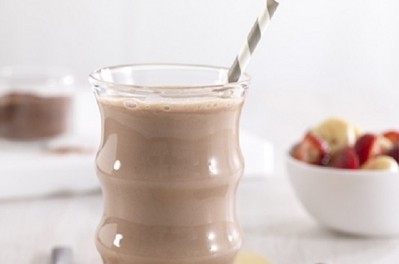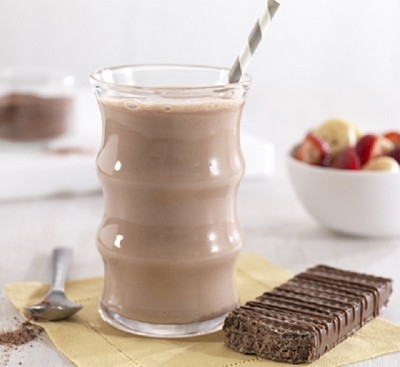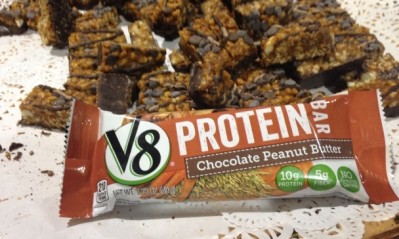Protein: the bridge to fitness for the rest of us

As the longtime centerpiece of sports nutrition, the already popular protein is poised for continued growth as the format of products containing this nutrient changes to meet mainstream tastes, says Greg Paul, PhD, global marketing director at DuPont Nutrition & Health.
“The sports nutrition category has been growing at greater than 10% in recent years because the market has expanded from hardcore bodybuilders and athletes to more mainstream fitness enthusiasts,” Dr. Paul told FoodNavigator-USA. “This migration is happening at a greater rate today than even two to three years ago as ‘team’ fitness programs and events like CrossFit and Tough Mudder gain in popularity. Fitness enthusiasts now train for a purpose rather than to look good and feel good.”
And thanks to the drop in price for fitness-tracking and other mobile devices, combined with the increased versatility of fitness and nutrition apps, weekend warriors, yogis and athletes alike can train anytime and anywhere on any device, with instant feedback, performance-tracking and even data-sharing capability to keep them (and their friends) motivated.
Bars, RTD beverages growing faster than traditional powdered beverages
As long as sports nutrition has been a category, protein has been its mainstay ingredient, Dr. Paul said, citing 2013 figures from Euromonitor, which found that protein constituted nearly 85% of the sports nutrition market in 2013 excluding sports and energy drinks. What is changing, he added, is the format of protein-containing products as more consumers look for easy ways to bump up the protein in their diets.
“With more and more mainstream consumers entering the category, convenient products like nutrition bars and ready-to-drink beverages have experienced significantly greater growth than the traditional powdered beverages,” he said.
Indeed, a 2013 report from Packaged Facts found that sales of nutrition bars are a big area for growth, even outpacing the much larger sports drinks category. Indeed, sales of bars were expected to reach $2.6bn in 2013, a 14% increase compared to 2012; while sports drinks grew 6% from 2012-13, reaching $7.4bn in sales last year.
A key contributor to the growth in bars has been the specific proteins designed to enhance texture and shelf life have greatly contributed to the market growth, Dr. Paul noted.
“It used to be that after six months, brand owners had to take bars off the shelf due to hardness,” he said. “Now, it is common for bars to have a one year shelf life and still meet quality standards for taste and texture.”
The flavor and texture of protein-containing food and beverage products have improved across the board, due to technological advancements in flavor and dispersibility for milk proteins, and improvements in vegetable proteins like soy in high-protein beverages. Moreover, formulators have found through sensory testing with high-protein beverages that milk and soy protein blends improve overall liking compared to all dairy or all soy protein beverages, though the blend depends on desired protein level and flavor.
“For example, chocolate tends to be an easier flavor to formulate with higher levels of protein than berry flavors,” Dr. Paul noted.
Claims are key: Consumers pay for benefits, not ingredients
Still, with all the hype surrounding protein, consumers appear to have a hard time linking benefits to specific protein types, according to a 2012 primary research study by DuPont.
“The data indicated that less than 10% of sports nutrition consumers could associate various benefits like muscle building or muscle recovery with specific proteins—whey protein, soy protein, casein, pea, etc.,” Dr. Paul noted. “I’m not sure if that number has increased today, but what is clear and has always been clear is that consumers want and pay for a benefit, not an ingredient.
“This is why the interest in claims is so great among brand owners because claims allow product benefits to be communicated to consumers. In countries where claims are not permitted, it is paramount that consumers understand the benefits of ingredients. Thus, education really becomes important, but it can be expensive and presents many challenges.”
'I've never looked at protein as being a trend'
Despite that protein has ridden into the mainstream on the recent wave of successful products making high protein claims—from gourmet jerky and Greek yogurt to quinoa snacks—Dr. Paul said it never really left. And it likely never will because of its multifaceted benefits (energy, satiety, workout recovery) that appeal to a wide consumer base.
“I have never looked at protein as being a trend,” he said. “It has always been a very desirable nutrient among consumers. Has that desire increased recently? Absolutely. And, I believe that increased desire will hold because though protein may suggest muscle building to a bodybuilder, fullness to a weight manager, energy to office worker, or blood sugar control to a person with diabetes, the one commonality is that all these benefits are positive. Not too many nutrients can stake that claim.”
What's next in sports nutrition?
Where is the $30bn sports nutrition market headed next and what role will protein play? To learn this and more, sign up for Sports Nutrition 2014, our free-to-attend Sept. 10 event. Details here!























